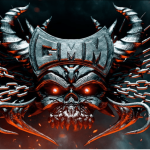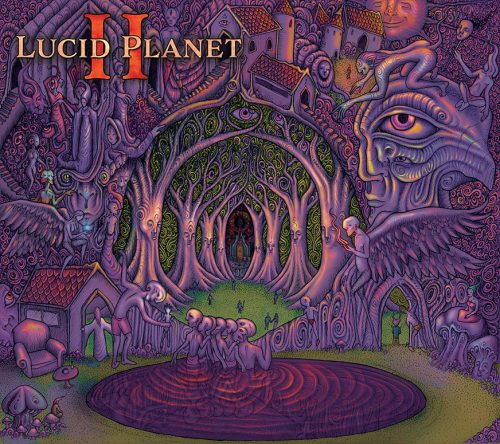
Graspop Metal Meeting 2024
20 July 2024
Hellfest 2024
27 July 2024When you think of metal music, the first things that come to mind are heavy riffs, powerful vocals, and pounding drums. But there’s another, often overlooked side to metal: psychedelic influences. In this article, I want to explore how psychedelic themes have found their place in the world of metal and shaped the genre’s sound and soul.

In the late 1960s and early 1970s, music was going through a huge experimental phase. Bands like The Beatles, Pink Floyd, and The Doors explored reality-bending, spiritual, and surreal experiences with psychedelic rock. When metal music emerged, it took inspiration from these sounds and made them heavier and more intense. Songs like Black Sabbath’s “Planet Caravan” and Led Zeppelin’s “Dazed and Confused” are great examples of the fusion of metal and psychedelia.
More recently, the psytrance duo Infected Mushroom has blended rock/metal and psytrance in their music. By incorporating heavy guitar riffs, aggressive vocals, and a dark atmosphere, they’ve created a fusion that appeals to fans of both genres. Their album “Legend of the Black Shawarma” features guest appearances from Jonathan Davis of Korn and Perry Farrell of Jane’s Addiction, highlighting the crossover appeal.
Psychedelic experiences often lead to reflections on reality and consciousness. Metal lyrics are a great medium for tackling these deep and dark themes. For instance, Tool’s “Lateralus” album delves into themes of spiritual awakening and personal growth, inviting listeners to explore their own minds.
Both psychedelic and metal music are rich with mystical and occult themes. Bands like Electric Wizard and Black Sabbath incorporate elements of witchcraft, extraterrestrial experiences, and ancient rituals into their music. These elements add a layer of mystery and allure, drawing listeners into another realm.
Psychedelic experiences often evoke a sense of connection with nature and the universe. Bands like Mastodon and Gojira write songs about humanity’s place in the cosmos and our relationship with nature. Tracks like Mastodon’s “The Last Baron” and Gojira’s “Flying Whales” take you on a journey through space and time. Speaking of “Flying Whales,” check out this review of Gojira’s “From Mars to Sirius” album: Gojira – From Mars to Sirius Review.
Metal bands use atmospheric elements to create psychedelic soundscapes. Effects like reverb and delay can make music feel expansive and otherworldly. For example, listening to Tool’s “Third Eye” can feel like floating in a vast, inner space.
Psychedelic themes often come with complex song structures that go beyond traditional musical forms. Progressive metal bands like Opeth and Dream Theater use intricate compositions and time signature changes to create a musical journey.
Adding unusual instruments can enhance the psychedelic feel. Sitars, synthesizers, and orchestral elements can add unique textures to metal. For example, the Mellotron and other vintage instruments used in Opeth’s “Heritage” album create a distinct psychedelic atmosphere.
Metal bands don’t just stop at the music; they bring psychedelic themes to life in their live performances and visuals. Inspired by pioneers like Pink Floyd, they use complex light shows, bizarre animations, and thematic stage designs to create immersive experiences. This blend of music and visuals takes you on a journey to another dimension. With psychedelic electronic music masters like Shpongle, Pink Floyd, and Tool, truly psychedelic works emerge from their visual shows. It’s like a journey where music and visuals together transport you to another dimension. Cynic’s “Ascension Codes” album could also have supported a show with amazing visuals.
The fusion of psychedelia and metal has left a lasting impact on the genre and its fans. This blend has fostered a community that values exploration, introspection, and a deeper connection. It has also led to the birth of new subgenres like stoner metal and psychedelic doom, pushing the boundaries of metal further. These layers, from exploring consciousness to creating soundscapes that transport us to other worlds, have become a vital part of metal’s DNA. As the genre continues to evolve, psychedelic influences keep inspiring musicians and fans, inviting us to explore the endless possibilities of sound and soul.
When it comes to Lucid Planet, I couldn’t wrap up the piece without mentioning them. The Australian band has released two studio albums so far, showcasing their unique blend of psychedelic and progressive rock/metal.
Lucid Planet creates a distinctive sound by combining various styles and drawing inspiration from a range of bands and artists. Influences like Tool, Pink Floyd, King Crimson, Tesseract, Opeth, Porcupine Tree, and Shpongle have all played a role in shaping their musical and lyrical content.
Their second album, “Lucid Planet II,” received positive reviews from both fans and critics, helping the band reach a wider audience. The album also solidified their place in the progressive music scene and demonstrated their growth as musicians.
Here are some bands you might want to check out: Lucid Planet, Tool, Baroness.




